Abstract
STUDY OBJECTIVE--The aim was to evaluate and improve the completeness of follow up in a cohort study of mortality carried out using the UK National Health Service (NHS) Central Registers. SETTING--This was a follow up study of UK servicemen who served abroad in the 1950s and 1960s, including those who participated in the UK atmospheric nuclear weapon tests and experimental programmes. DESIGN--Details of men for whom follow up achieved using the NHS Central Registers was unsatisfactory were submitted to the Department of Social Security (DSS) for tracing, as were details of men born before 1916 and reported by the NHS Central Registers as currently registered with a general practitioner, and a 1% sample of remaining men born in or after 1916. MEASUREMENTS AND MAIN RESULTS--The additional follow up increased the number of deaths fully identified in the cohort by 6.5%. Mortality among those untraced on the NHS Central Registers was substantially greater than in the cohort as a whole (10.2% v 6.9%). Among those reported by the NHS Central Registers as not currently registered with a general practitioner, 2.7% were found to have died, as were 1.1% of men born before 1916 and currently reported to be registered with a general practitioner. As expected there was clear evidence that information about emigrations supplied by both the NHS Central Registers and DSS is far from complete. CONCLUSION--Standardised mortality ratios based on follow up via the NHS Central Registers alone are likely to be somewhat low, and this should be borne in mind when interpreting the data.
Full text
PDF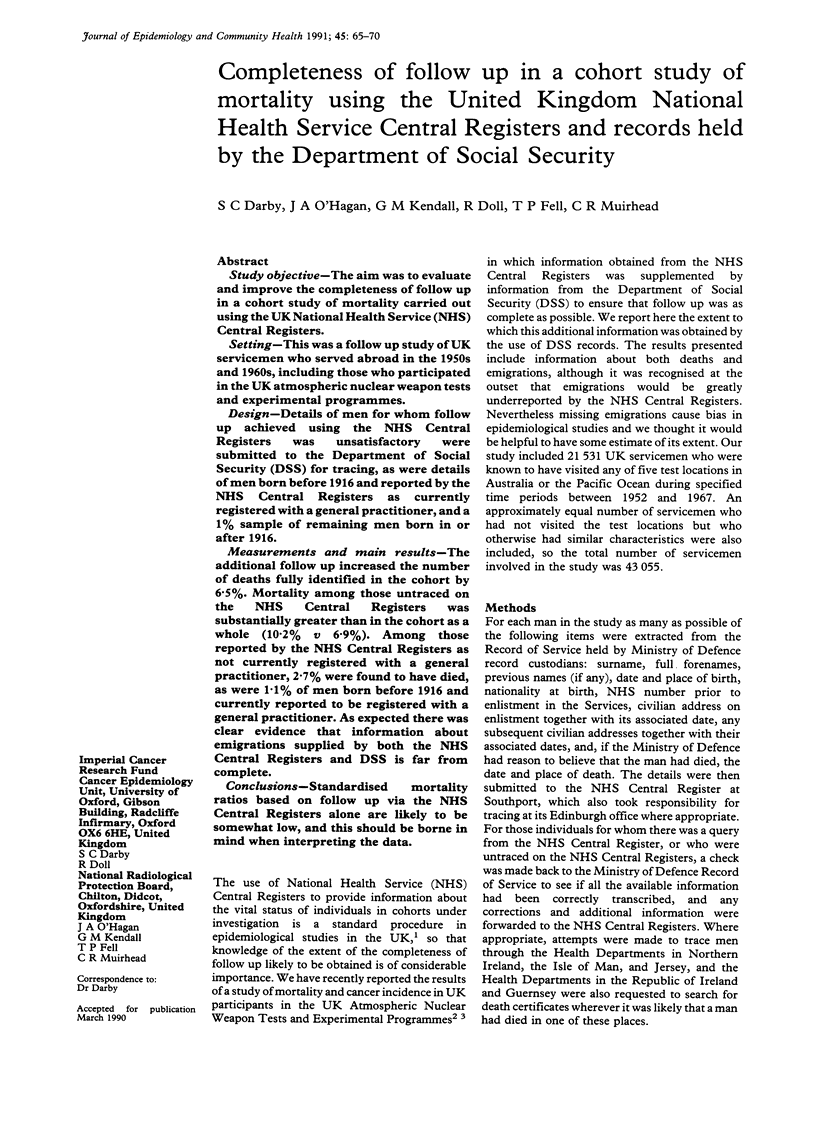
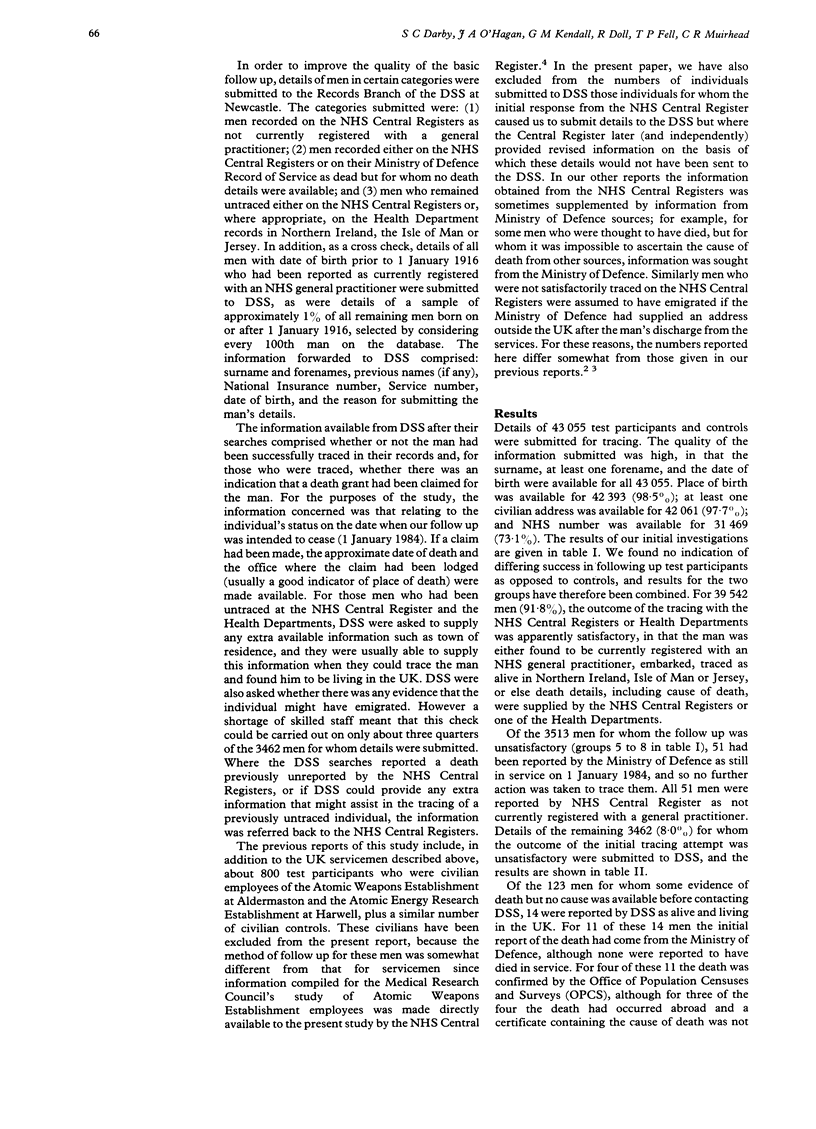
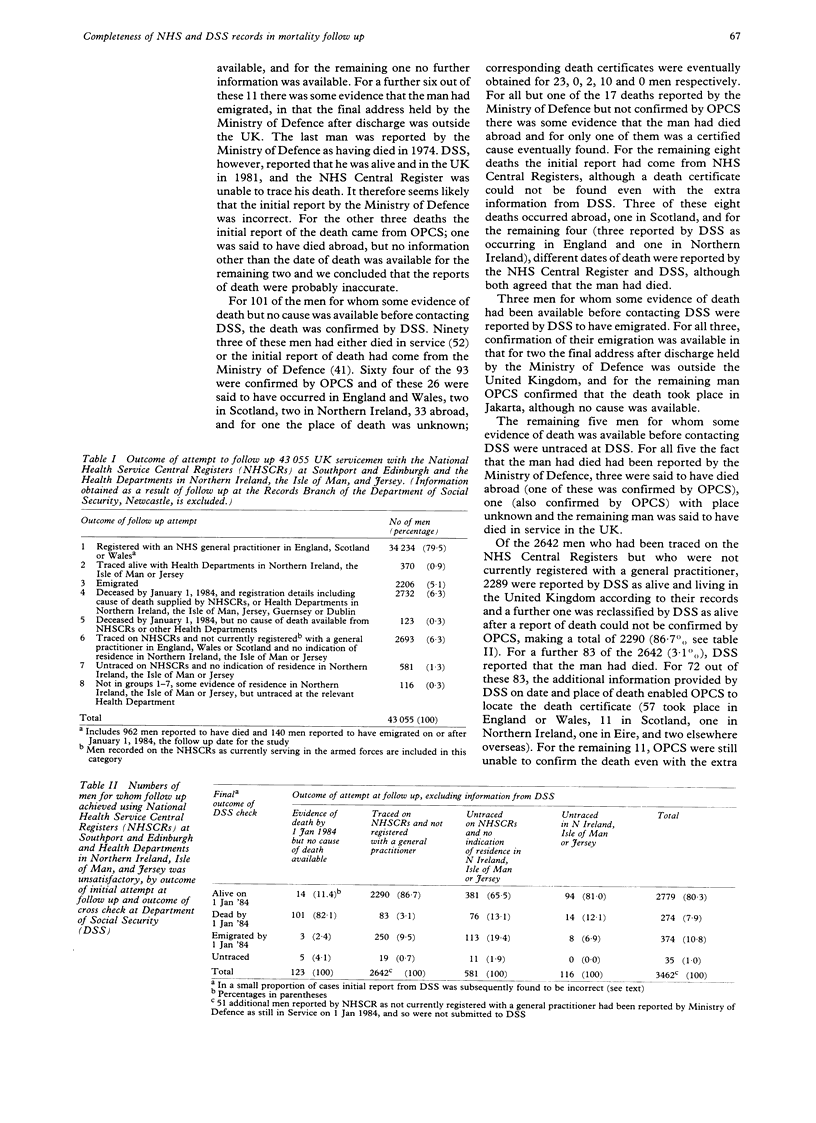
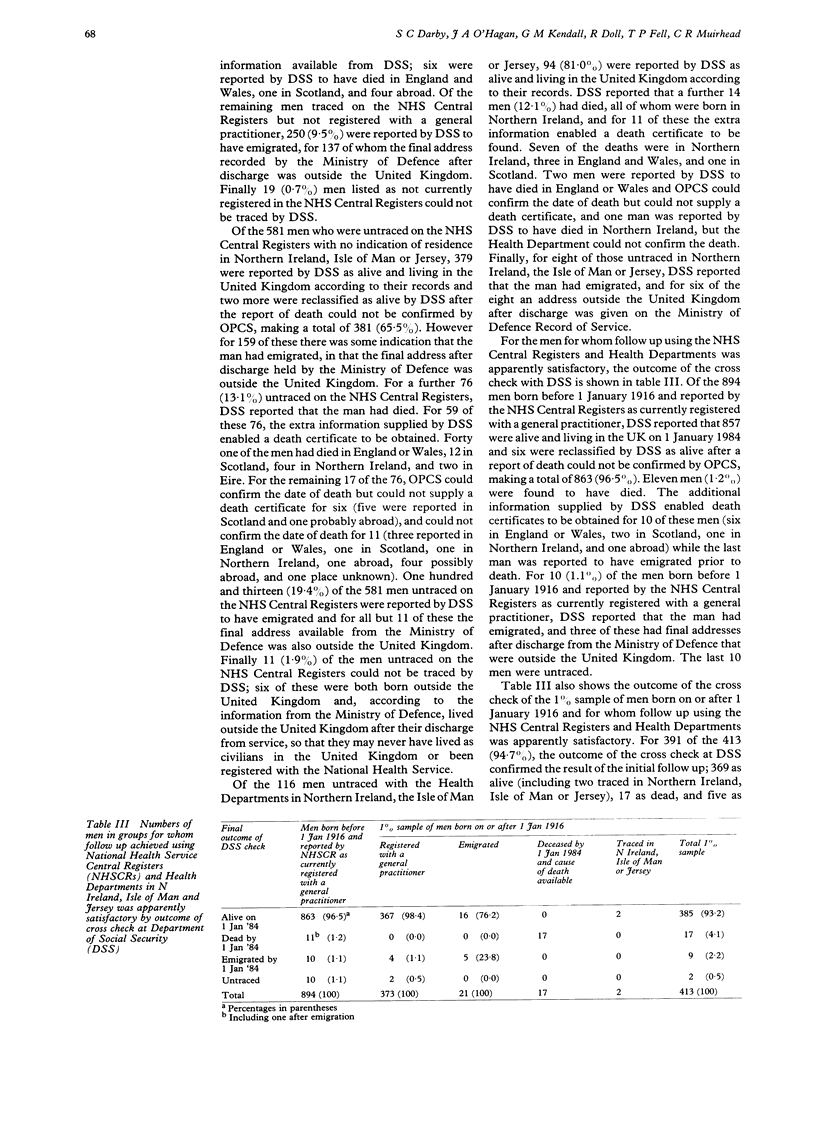
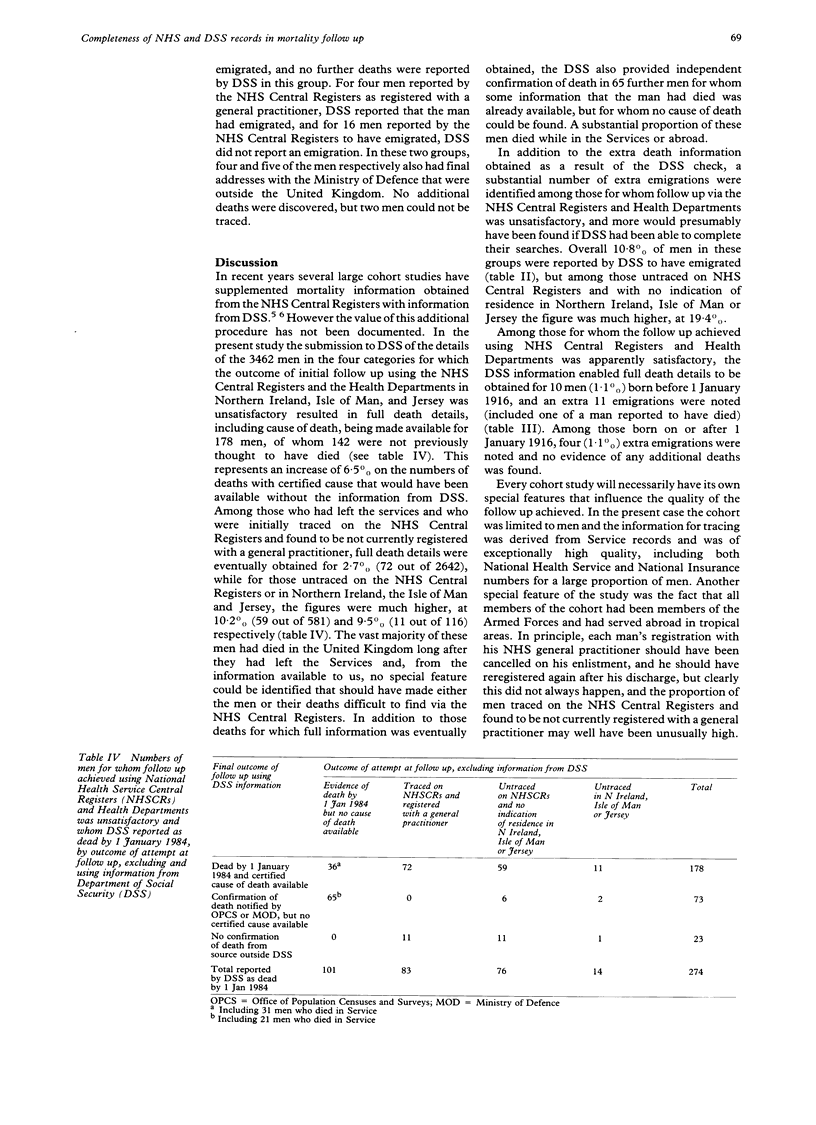
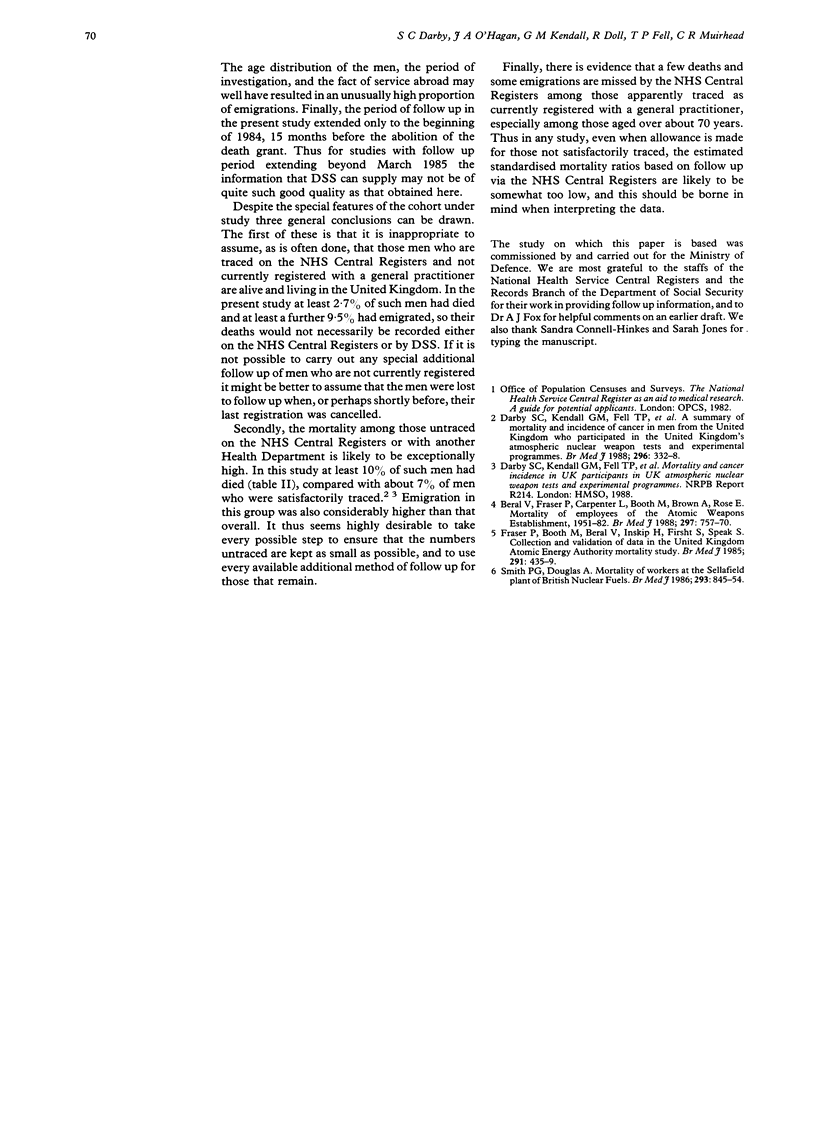
Selected References
These references are in PubMed. This may not be the complete list of references from this article.
- Beral V., Fraser P., Carpenter L., Booth M., Brown A., Rose G. Mortality of employees of the Atomic Weapons Establishment, 1951-82. BMJ. 1988 Sep 24;297(6651):757–770. doi: 10.1136/bmj.297.6651.757. [DOI] [PMC free article] [PubMed] [Google Scholar]
- Darby S. C., Kendall G. M., Fell T. P., O'Hagan J. A., Muirhead C. R., Ennis J. R., Ball A. M., Dennis J. A., Doll R. A summary of mortality and incidence of cancer in men from the United Kingdom who participated in the United Kingdom's atmospheric nuclear weapon tests and experimental programmes. Br Med J (Clin Res Ed) 1988 Jan 30;296(6618):332–338. doi: 10.1136/bmj.296.6618.332. [DOI] [PMC free article] [PubMed] [Google Scholar]
- Fraser P., Booth M., Beral V., Inskip H., Firsht S., Speak S. Collection and validation of data in the United Kingdom Atomic Energy Authority mortality study. Br Med J (Clin Res Ed) 1985 Aug 17;291(6493):435–439. doi: 10.1136/bmj.291.6493.435. [DOI] [PMC free article] [PubMed] [Google Scholar]
- Smith P. G., Douglas A. J. Mortality of workers at the Sellafield plant of British Nuclear Fuels. Br Med J (Clin Res Ed) 1986 Oct 4;293(6551):845–854. doi: 10.1136/bmj.293.6551.845. [DOI] [PMC free article] [PubMed] [Google Scholar]


